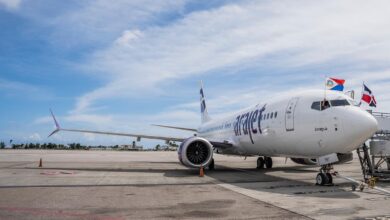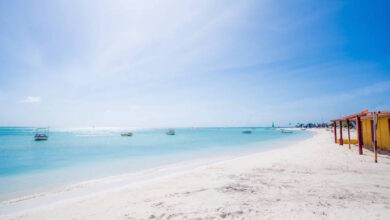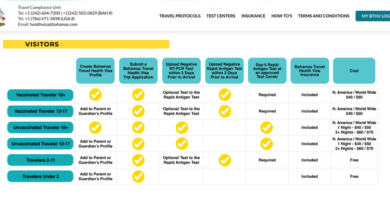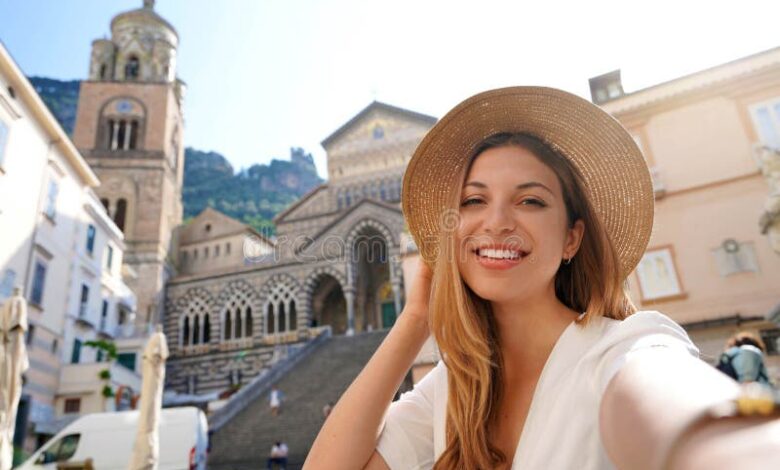
Another Summer of Selfie Tourism in Italy
Another summer of selfie tourism in Italy is upon us, capturing the vibrant landscapes and cultural treasures of the country in a flurry of posed photographs. From iconic landmarks to charming local shops, tourists are documenting their Italian adventures through the lens of their smartphones, creating a unique visual narrative. This trend raises intriguing questions about the impact on local communities, the environment, and the future of Italian tourism.
This exploration delves into the multifaceted phenomenon of selfie tourism in Italy, examining its historical context, its effects on Italian cities and towns, and the ways in which social media plays a crucial role in shaping the experience. We’ll also consider the sustainability implications and the opportunities for cultural exchange that arise from this modern form of travel.
Overview of Selfie Tourism in Italy
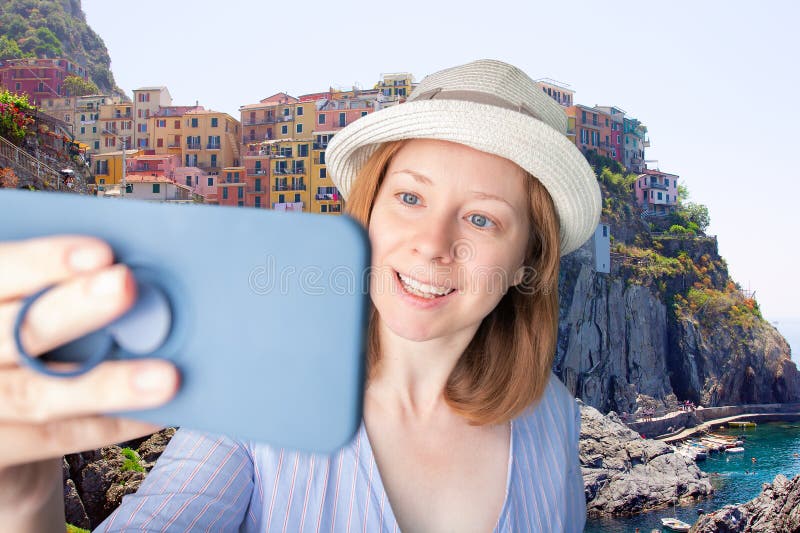
Italy, a land of breathtaking landscapes, historical monuments, and vibrant culture, has become a popular destination for selfie tourism. This trend, driven by social media’s influence, has seen a significant evolution over the years, impacting both the tourism industry and Italian society. From capturing iconic landmarks to showcasing regional traditions, the selfie has become an integral part of the Italian travel experience.
History of Selfie Tourism in Italy
Selfie tourism in Italy, like in other parts of the world, emerged with the rise of social media platforms. Early adopters used simple cameras and phones to capture photos, mostly of themselves in front of famous landmarks. This initial phase was characterized by a desire to document the experience and share it with friends and family. Over time, the trend evolved, becoming more sophisticated with the use of elaborate backdrops, creative poses, and professional-grade equipment.
Evolution of the Trend
The evolution of selfie tourism has been marked by several distinct phases. Initially, selfies were primarily focused on documenting locations. Then, the focus shifted to creating aesthetically pleasing images, often incorporating specific clothing, props, or filters to enhance the visual appeal. More recently, there’s a growing emphasis on authenticity and capturing moments that reflect the local culture and traditions.
This evolution suggests a move beyond simply showcasing a location to creating a personal narrative that blends travel and self-expression.
Demographics of Selfie Tourists
Selfie tourists visiting Italy come from a diverse range of backgrounds. A significant portion comprises young adults and millennials, who are highly active on social media and value the visual aspect of their travel experiences. However, the trend extends to other demographics, including families and couples seeking unique photo opportunities. The desire to share experiences and create memorable moments is a common thread across different age groups.
Cultural Impact on Italian Society
The rise of selfie tourism has had a noticeable impact on Italian society. On one hand, it has boosted the tourism sector, bringing more revenue to local businesses and communities. However, concerns have arisen regarding the impact on historical sites and cultural traditions. Overcrowding and inappropriate behavior at popular tourist spots have prompted discussions about managing the influx of selfie tourists and preserving the authentic character of Italian heritage.
Comparison of Selfie Tourism in Italy with Other European Countries
| Country | Prevalence of Selfie Tourism | Impact on Local Culture | Management Strategies |
|---|---|---|---|
| Italy | High; often centers around iconic landmarks and historical sites. | Potential for overcrowding and inappropriate behavior; discussion on preserving authenticity. | Limited formal strategies; reliance on community guidelines and tourism regulations. |
| Spain | High; particularly in major cities and tourist destinations. | Similar concerns regarding overcrowding and potential damage to cultural heritage. | Increasingly incorporating strategies to manage tourist flow and visitor behavior. |
| France | High; popular destinations attract large numbers of selfie tourists. | Concerns regarding impacts on historical sites and cultural spaces; preservation of local traditions. | Ongoing efforts to balance tourism with cultural preservation. |
| Greece | Moderate; high concentration in popular tourist islands and ancient sites. | Concerns about preservation of archaeological sites and local traditions. | Efforts to implement visitor management strategies and awareness campaigns. |
Impact on Italian Cities and Towns
Selfie tourism, a burgeoning trend globally, has undeniably cast its shadow over Italy’s picturesque landscapes. While it presents potential economic benefits, its impact on local communities, infrastructure, and the very essence of the Italian experience requires careful consideration. This exploration delves into the multifaceted effects of this photographic phenomenon, analyzing both the positive and negative consequences for Italian cities and towns.The influx of selfie-seeking tourists, drawn by Italy’s iconic architecture and charming towns, can translate into significant economic gains for local businesses.
Increased foot traffic, demand for accommodations, and spending on food and souvenirs can boost local economies. However, this economic uplift is not uniformly distributed, and the potential downsides are equally crucial to understanding.
Positive Economic Effects on Specific Cities
Increased tourism, particularly selfie tourism, often translates to more revenue for local businesses. Shops and restaurants in popular selfie spots benefit from increased customer traffic. This can lead to job creation, particularly in the hospitality and tourism sectors. For example, Rome’s historical sites, like the Trevi Fountain, consistently see a surge in visitors, leading to higher revenue for businesses catering to tourists.
Potential Negative Consequences on Local Communities
While the economic benefits exist, the potential negative consequences of selfie tourism on local communities are equally significant. The constant influx of tourists can strain local resources, particularly in densely populated areas. Concerns regarding overcrowding, noise pollution, and a potential homogenization of the local culture are not uncommon. Furthermore, the focus on capturing the perfect shot can sometimes overshadow the genuine experience of interacting with the local environment and culture.
Strain on Local Infrastructure and Resources
The influx of selfie tourists places a substantial burden on local infrastructure. Increased traffic congestion, strain on sanitation systems, and pressure on public utilities can lead to significant problems. In smaller towns, the infrastructure might not be equipped to handle the sudden surge in visitors, potentially leading to disruption of daily life. For example, a popular selfie spot might experience prolonged traffic jams, impacting local businesses and residents alike.
Comparison of Tourist Experiences in Popular vs. Less-Visited Areas
Tourists visiting popular selfie spots often experience a more superficial interaction with the local environment. The focus is frequently on capturing the perfect photo, often leading to a rushed and less immersive experience. In contrast, tourists visiting less-visited areas can experience a more authentic connection with the local culture, history, and natural beauty. They are more likely to engage with the local community and partake in activities that are less geared toward commercial tourism.
Popular Selfie Spots and Associated Challenges
| Popular Selfie Spot | Potential Challenges | Economic Benefits | Impact on Local Communities |
|---|---|---|---|
| Colosseum, Rome | Overcrowding, security concerns, preservation issues | Significant revenue for local businesses, jobs in tourism | Potential strain on local infrastructure, increased noise pollution |
| Positano, Amalfi Coast | Traffic congestion, limited parking, environmental impact | High tourist spending, boost to local businesses | Strain on water and sanitation resources, potential displacement of local residents |
| Pantheon, Rome | Crowded queues, preservation concerns | Increased foot traffic, revenue for surrounding shops | Potential impact on the ambiance and cultural experience |
| Venice’s bridges | Crowding, difficulty navigating, litter | Increased foot traffic, potential for new businesses | Disruption to local life, possible damage to historical sites |
Visual Representation of the Trend
Italian tourism, especially selfie tourism, is increasingly visible in social media feeds, showcasing a particular visual style and aesthetic. This reflects a broader trend of curated online experiences, where tourists aim to capture and share authentic, memorable moments, often through self-portraits. The visual style of these selfies, from the chosen poses to the backdrop and accessories, tells a story about the tourist’s perception of Italy and their own identity.The selfie-taking tourists often try to encapsulate the essence of Italy, attempting to capture its beauty and charm in a single frame.
This visual representation is heavily influenced by social media trends and the desire to create a shareable experience that resonates with online communities. This pursuit of the perfect selfie often reflects a desire to share a specific narrative about the tourist’s journey.
Visual Style and Aesthetic
The visual style of selfies taken by tourists in Italy typically showcases a vibrant aesthetic, highlighting iconic landmarks and charming streetscapes. Colors are often saturated, emphasizing the beauty of Italian architecture and scenery. The lighting frequently emphasizes the natural beauty of the location, often using ambient light to enhance the image’s ambiance. The overall effect aims to evoke a sense of warmth, romance, and adventure.
Poses and Accessories
Tourists often employ a range of poses, from classic selfies to more creative and stylized shots. The poses often reflect common tourist activities, like posing in front of famous monuments or enjoying gelato. Accessories like sunglasses, hats, and Italian-themed scarves or jewelry are frequently incorporated to complement the image and reflect the tourist’s personal style. Some selfies might incorporate the tourist interacting with local vendors or participating in local activities, adding a sense of authentic engagement.
Iconic Selfie Spots
Several locations in Italy have become popular selfie spots, drawing large crowds of tourists seeking the perfect shot. The Trevi Fountain in Rome, the Leaning Tower of Pisa, and the Duomo di Milano are frequently featured in selfie tourism. Other popular spots include picturesque Italian villages, cobbled streets, and charming cafes, often capturing the essence of Italian life.
These locations are often chosen because of their visual appeal and historical significance.
Cultural Perceptions and Stereotypes, Another summer of selfie tourism in italy
The visual representation of selfies often reflects cultural perceptions and stereotypes. Tourists may pose in ways that reinforce pre-existing notions about Italian culture, sometimes falling into stereotypical portrayals. For example, tourists might focus on picturesque locations and less on interacting with local communities. While the intention is often positive, these images can sometimes contribute to simplified and potentially misleading representations of Italian culture.
Common Selfie Hashtags
Tourists commonly use specific hashtags to categorize and share their selfies on social media platforms. These hashtags help to organize content, identify relevant content, and connect with other users.
| Hashtag Category | Example Hashtags | Description | Frequency (Estimated) |
|---|---|---|---|
| Italy Tourism | #Italy, #ItalianTrip, #TravelItaly, #ItalianSummer | General hashtags related to Italy tourism | High |
| Landmark Photos | #Rome, #Colosseum, #TreviFountain, #Pisa | Hashtags referencing specific Italian landmarks | Medium |
| Cultural Experiences | #ItalianFood, #Gelato, #ItalianCuisine, #WineTour | Hashtags focusing on cultural experiences | Medium |
| Selfie Focus | #Selfie, #SelfieLove, #TouristSelfie, #ItalySelfie | Hashtags directly relating to selfies | High |
Social Media Presence and Engagement
Social media has become an undeniable force in shaping modern tourism, and Italy, with its rich history and stunning landscapes, is no exception. Selfie tourism, in particular, thrives on visual representation, making social media platforms a crucial element in attracting and engaging tourists. The online world dictates how potential visitors experience Italy, and businesses are increasingly recognizing the power of this dynamic.
The Role of Social Media in Promoting Selfie Tourism
Social media platforms act as powerful visual catalogues of Italy’s beauty, showcasing its historical sites, picturesque towns, and vibrant culture through the lens of selfie tourism. Users share their experiences, often incorporating specific hashtags and locations, effectively turning these platforms into interactive travel guides. This shared visual content generates interest and encourages others to visit. Users, looking for inspiration, often see these photos and are compelled to seek out these locations for themselves.
Influencers and Online Communities Shaping Tourist Behavior
Influencers play a significant role in promoting selfie tourism. Their curated content, often showcasing aesthetically pleasing experiences, influences the choices of potential tourists. Online communities, such as travel forums and social media groups, further amplify these effects. These communities often share tips, recommendations, and advice for capturing the perfect selfie in specific locations, thereby shaping the tourist experience.
For example, a travel influencer’s post showcasing a unique viewpoint in Tuscany can spark a wave of interest and lead to increased traffic to that area. Similarly, detailed information within travel forums, like the best angles for a selfie in front of a particular landmark, can direct the tourist behavior.
Strategies Employed by Businesses to Attract Selfie Tourists
Businesses, recognizing the importance of visual appeal, employ various strategies to attract selfie tourists. This includes creating visually appealing environments, designing dedicated selfie spots, and offering tailored experiences. For instance, a café might strategically place a backdrop for stunning photos, or a restaurant might offer a unique dining experience with a visually engaging ambiance. These proactive measures not only attract tourists but also encourage them to share their experiences online, creating a positive feedback loop.
Another summer, another deluge of selfie tourism in Italy. While the iconic Roman ruins and Tuscan vineyards are undeniably captivating, it’s hard to shake the feeling that the focus is sometimes less on experiencing the culture and more on capturing the perfect Instagram moment. Meanwhile, luxury resorts like Amanyara in the Turks and Caicos are undergoing exciting renovations, offering a more secluded and immersive experience.
Amanyara Turks and Caicos renovations promise a truly rejuvenating getaway for those seeking an alternative to the often-crowded Italian scene. Ultimately, though, Italy still holds a unique allure for its history and beauty, even amidst the selfie-obsessed summer crowds.
Challenges of Managing Online Reputation
Managing online reputation in the face of negative feedback is a significant challenge. A single negative review or poorly managed social media response can have a detrimental impact on a business’s reputation. It is crucial for businesses to respond to criticism promptly and professionally, demonstrating a willingness to address concerns and maintain a positive image. For example, if a tourist posts a negative experience about a restaurant, the restaurant should address the issue privately, offering a solution, and publicly communicate that they value customer feedback.
Examples of How Social Media Showcases the Positive Aspects of Selfie Tourism
Social media platforms offer numerous opportunities to showcase the positive aspects of selfie tourism. Visual content, such as photos and videos, highlights the beauty and charm of Italian locations. These visually engaging posts encourage tourists to visit and experience the destinations themselves. A successful example could be a series of posts showcasing the different locations and perspectives within a city like Rome, or a series of stories highlighting the beauty of a regional landscape.
These posts, by their nature, contribute to the promotion of Italy as a visually appealing destination.
Sustainability and Responsible Tourism
Selfie tourism, while injecting vibrancy into Italian cities and towns, presents a complex interplay between economic gain and environmental impact. Balancing the allure of capturing the perfect Instagram shot with the preservation of Italy’s natural and cultural heritage is crucial for the long-term health of the tourism industry. This delicate balance demands a shift towards responsible tourism practices and a commitment from both tourists and tourism operators to minimize environmental harm.The pursuit of picturesque moments often leads to increased pressure on fragile ecosystems and cultural sites.
Understanding the environmental footprint of selfie tourism is paramount to implementing effective mitigation strategies and fostering sustainable tourism practices. Italy, renowned for its breathtaking landscapes and historical treasures, must navigate this challenge carefully to ensure its appeal remains intact for future generations.
Environmental Impact of Selfie Tourism
The influx of tourists, driven by the desire for perfect selfies, can strain local resources. Increased traffic, amplified noise pollution, and pressure on limited infrastructure contribute to environmental degradation. The pursuit of “the perfect shot” can also lead to damage to sensitive ecosystems, particularly in areas with high biodiversity. Overcrowding can disrupt natural habitats, disturb wildlife, and accelerate the degradation of natural landscapes.
For example, popular hiking trails and historical sites often face increased wear and tear due to the concentrated movement of tourists seeking the best selfie opportunities.
Mitigation Measures for Negative Environmental Consequences
Several initiatives are being undertaken to lessen the environmental impact of selfie tourism. Improved waste management systems, increased public transportation options, and the promotion of eco-friendly accommodations are crucial steps. Educating tourists about responsible behavior, including minimizing waste, respecting local customs, and adhering to environmental regulations, is also essential. For instance, many Italian cities are implementing programs to promote sustainable transportation options, encouraging tourists to utilize public transit or bikes instead of private vehicles.
Importance of Responsible Tourism Practices
Responsible tourism practices are vital for the long-term sustainability of Italy’s tourism sector. These practices extend beyond environmental considerations and encompass social and cultural aspects. Encouraging tourists to engage with local communities, respect cultural norms, and support local businesses helps create a more balanced and mutually beneficial relationship. Furthermore, responsible tourism empowers local communities by providing economic opportunities while preserving their cultural heritage.
Comparison of Tourism Operators’ Approaches to Sustainability
Different tourism operators exhibit varying levels of commitment to sustainability. Some prioritize eco-friendly practices, implementing measures like energy-efficient infrastructure and sustainable sourcing of materials. Others may still rely on traditional models, which can lead to higher environmental footprints. There is a clear opportunity for tourism operators to adopt more holistic and environmentally conscious approaches, recognizing that sustainable practices often translate into long-term economic viability.
Strategies for Balancing Tourism Growth with Environmental Protection
Balancing tourism growth with environmental protection requires a multifaceted approach. Sustainable tourism initiatives, combined with strong environmental regulations and public awareness campaigns, are vital. Investing in infrastructure that supports sustainable practices, like efficient public transportation and renewable energy sources, is crucial. Promoting responsible tourism through education and clear guidelines for tourists and operators can also foster a more sustainable future for Italy’s tourism industry.
For instance, Italy could leverage technology to create virtual tours of historical sites and natural landscapes, reducing the physical pressure on these areas. This approach can not only limit the environmental impact but also offer tourists a unique and engaging experience.
Another summer of selfie tourism in Italy is upon us, and the endless queues at iconic landmarks are a familiar sight. While tourists are snapping away, though, it’s worth considering the impact of a potential pay cut for Americans, which could significantly affect their travel budgets. For example, american s pay cut could lead to fewer tourists, or at least a change in how they plan their Italian adventures.
Regardless, the summer selfie spree in Italy will likely continue, albeit potentially with a few more thoughtful considerations from travelers.
Economic and Cultural Interactions: Another Summer Of Selfie Tourism In Italy
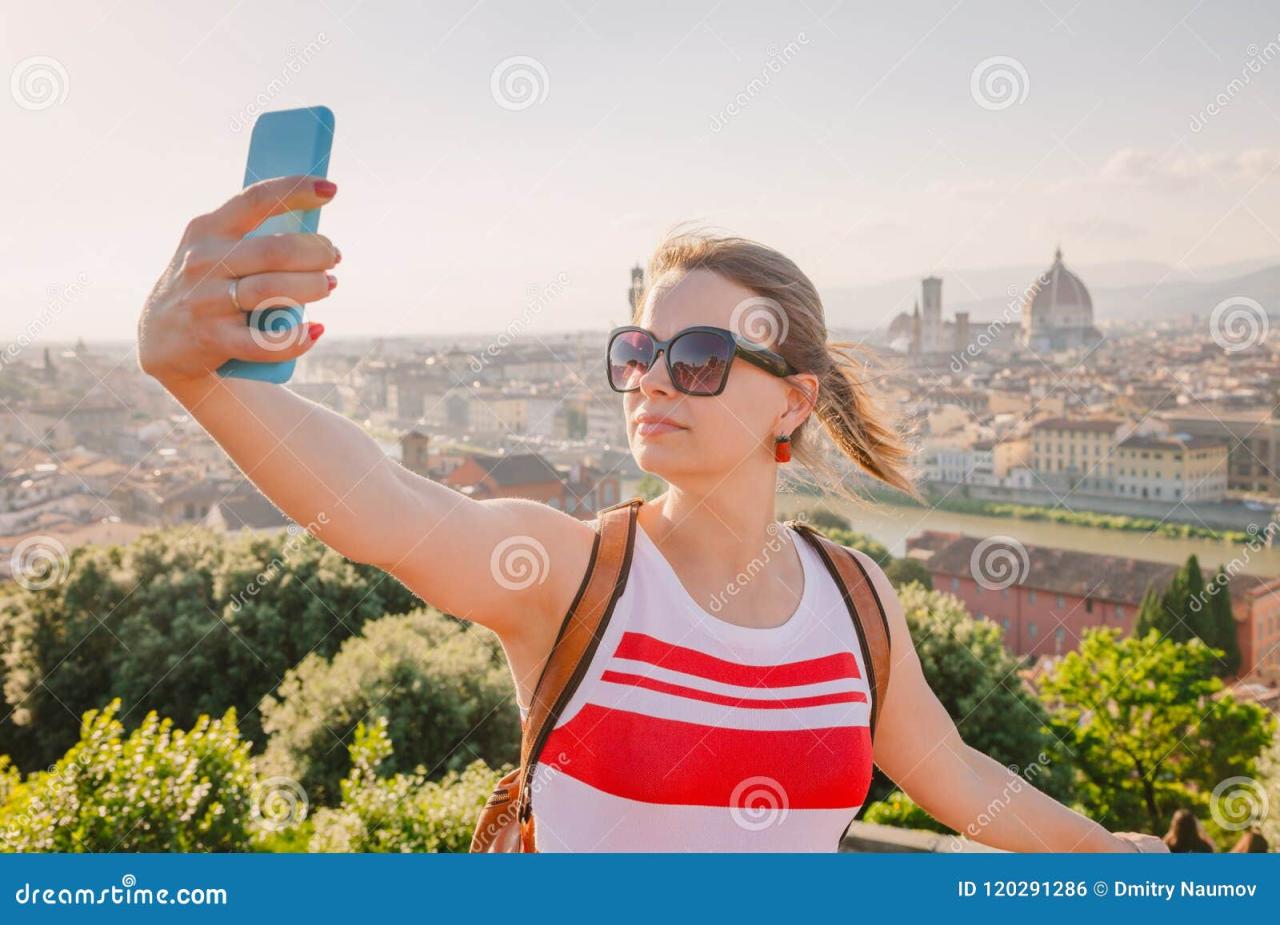
Selfie tourism, while seemingly frivolous, has significant economic and cultural impacts on Italian towns and cities. It’s not just about snapping photos; it’s about how tourists interact with local businesses, artisans, and the cultural fabric of the region. This exploration dives into the financial exchanges, the impact on local crafts, the role of souvenirs, and the varying experiences for tourists from different socioeconomic backgrounds.The economic exchange between tourists and local businesses is often complex and multifaceted.
While some businesses might benefit from increased foot traffic and potential higher prices due to the demand for photo opportunities, others might see little change. The impact varies significantly depending on the specific town, the nature of the businesses, and the overall tourist experience.
Economic Exchange Between Tourists and Local Businesses
The interaction between tourists and local businesses in selfie tourism often involves a dynamic exchange. Tourists, seeking unique photo opportunities, frequently patronize local cafes, shops, and restaurants. This increased foot traffic can lead to higher revenue for these businesses, contributing to the local economy. However, this exchange is not always equal. Some businesses might rely heavily on the tourist trade, while others are more independent of this type of revenue stream.
Additionally, pricing strategies can be affected by the selfie-tourism trend. Some businesses may adjust prices based on the perceived value of the photo-worthy experience, potentially impacting the overall cost of the tourist experience.
Impact of Selfie Tourism on Local Artisans and Craftspeople
Selfie tourism can directly affect local artisans and craftspeople. For those whose work is easily integrated into photo opportunities (think handcrafted jewelry or decorative items), there’s a potential for increased sales. However, the relationship is not always straightforward. Artisans might need to adapt their offerings to appeal to the specific desires of selfie-oriented tourists, potentially compromising the artistic integrity of their work.
Some might also find that their work is only valued as a background prop, diminishing the appreciation for the skill and artistry involved. Furthermore, the trend might pressure artisans to mass-produce items, potentially compromising the uniqueness and quality of their crafts.
Another summer, another onslaught of selfie tourism in Italy. It’s a predictable pattern, really. But while you’re snapping your shots of the Leaning Tower, you might also want to check out what Adventuresmith is offering – a fantastic Hawaii cruise. adventuresmith announces hawaii cruise offering. It’s a welcome change of pace from the crowds, and a perfect way to escape the Italian summer heat.
Still, the selfie-obsessed will likely find their way back to Italy eventually.
Role of Souvenirs and Local Products in Selfie Tourism
Souvenirs play a crucial role in selfie tourism. They are not just items to take home; they are often integral parts of the photo experience. Tourists may purchase souvenirs that are visually appealing or have cultural significance to enhance their photo opportunities. This can create a demand for certain products and boost sales for local businesses that offer them.
The trend also opens up opportunities for new souvenir designs and types of local products that cater to the selfie-oriented tourist. However, the impact on traditional souvenirs is still being observed, as the market evolves alongside the selfie tourism trend.
Comparing Tourist Experiences Based on Socioeconomic Background
The selfie tourism experience is likely to vary significantly depending on the socioeconomic background of the tourists. Tourists with higher disposable incomes might be more willing to pay higher prices for unique photo opportunities or access exclusive experiences, potentially widening the gap between different tourist groups. Those with lower incomes might focus on more budget-friendly experiences or rely on readily available photo spots, leading to a diverse range of tourist experiences within the same destination.
Accessibility and affordability of experiences are key factors in this variation.
Another summer, another onslaught of selfie tourism in Italy. It’s a familiar scene, really, but perhaps this year, there’s a subtle shift. While everyone’s snapping pics in front of the iconic landmarks, maybe they’re also considering a different kind of Italian adventure, like those offered by the American Queen Ocean Victory, which is winning points for its focus on exciting excursions.
American Queen Ocean Victory wins points for adventure focus. Regardless, the selfie-obsessed crowds still seem to dominate the streets, proving that Italy’s charm endures, even amidst the digital displays.
Potential for Cultural Exchange Through Selfie Tourism
Selfie tourism, while sometimes criticized, can offer a platform for cultural exchange. Tourists engaging with local businesses and artisans can gain a deeper understanding of local traditions and crafts. Likewise, locals can learn about the tourists’ backgrounds and perspectives, fostering interaction and appreciation for diverse cultures. The key is to ensure that this form of tourism supports, rather than exploits, the local culture and traditions.
Another summer, another onslaught of selfie tourism in Italy. Tourists flock to iconic landmarks, eager to capture the perfect shot, often oblivious to the broader impact of their actions. This constant pursuit of the perfect Instagram moment is deeply intertwined with the strategies of advertising and the pioneer OTAs, advertising and the pioneer OTAs , who expertly target these desires.
Ultimately, it all boils down to the enduring allure of Italy, a destination that continues to draw visitors from around the globe.
Future Trends and Projections
Selfie tourism in Italy, a vibrant and evolving phenomenon, is poised for continued growth. The desire to capture and share memorable experiences online fuels this trend, and its future trajectory will be significantly influenced by technological advancements and social media shifts. Understanding these factors is crucial for the Italian tourism industry to adapt and thrive in the coming years.The next five to ten years will likely see a further integration of technology into the selfie tourism experience.
This includes augmented reality (AR) filters overlaying images with virtual objects or locations, personalized recommendations based on past selfie trends, and potentially even the use of drones for capturing unique aerial perspectives. The use of virtual reality (VR) experiences might also allow tourists to virtually explore historical sites and monuments before their visit, thus enhancing the anticipation and experience.
Potential Technological Developments
The integration of AR and VR technologies into selfie tourism experiences will likely be a significant development. AR filters will allow users to overlay virtual objects or locations onto their selfies, creating unique and engaging content. Similarly, VR experiences could enable tourists to virtually explore historical sites and monuments, enhancing their anticipation and experience. These technologies will create new avenues for engagement and enhance the selfie tourism experience.
Furthermore, personalized recommendations based on past selfie trends will cater to individual preferences, providing a more tailored experience. Drones might also be utilized for capturing unique aerial perspectives, leading to more innovative and visually captivating selfies.
Implications for the Italian Tourism Industry
The future of selfie tourism will have significant implications for the Italian tourism industry. The industry must adapt to the evolving needs of selfie tourists, ensuring that attractions are suitable for capturing high-quality photos. This could involve strategically placing photogenic backdrops, offering themed areas, and providing clear guidelines on appropriate photo opportunities. The development of dedicated selfie tourism packages or tours could also cater to this trend.
Additionally, the industry needs to engage effectively with social media platforms to create awareness and drive engagement. Finally, there is a need for careful planning and management to ensure that selfie tourism does not compromise the sustainability or authenticity of Italian heritage.
Social Media Influence on the Trend
Social media platforms will continue to be central to the selfie tourism experience. Trends, filters, and challenges will emerge, shaping what locations are popular and how tourists interact with the environment. The rise of short-form video platforms will likely further amplify the visual aspect of selfie tourism, allowing for dynamic and engaging content creation. Influencers will play an increasingly crucial role in promoting locations and experiences, influencing tourist choices.
Furthermore, social media algorithms will likely play a crucial role in shaping the trend, by directing attention towards specific locations and experiences.
Future Challenges and Opportunities
| Challenge | Opportunity | Mitigation Strategy | Specific Example |
|---|---|---|---|
| Overtourism and pressure on fragile sites | Sustainable selfie tourism initiatives | Promote responsible tourism practices | Creating designated selfie zones, limiting access during peak hours |
| Maintaining authenticity and cultural sensitivity | Highlighting local traditions and stories | Educate tourists on cultural norms | Partnering with local artisans and businesses |
| Keeping up with evolving technology | Developing innovative selfie tourism experiences | Invest in training and technology upgrades | Implementing AR filters and VR tours |
| Managing the impact on local communities | Creating economic benefits for local businesses | Support local businesses | Partnering with local restaurants and shops |
Closing Notes
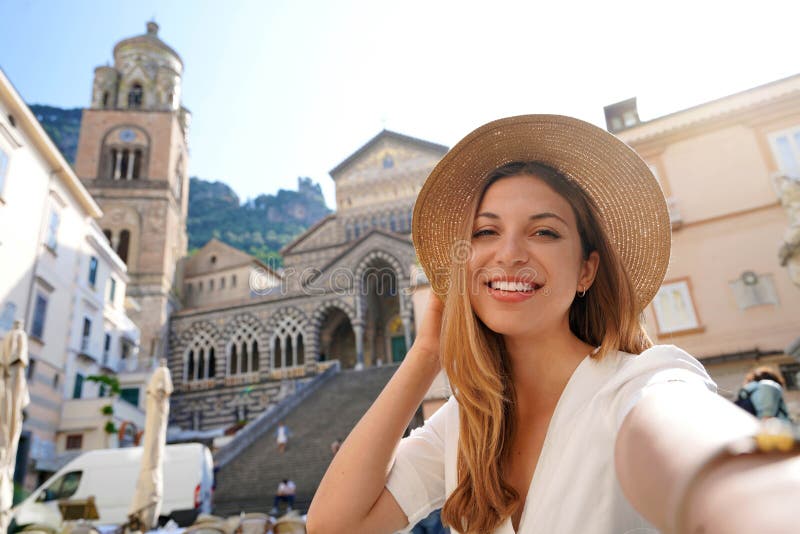
In conclusion, selfie tourism in Italy is a complex tapestry woven from economic benefits, environmental concerns, and cultural interactions. While it undoubtedly brings economic activity and visual representation to Italian cities, it also presents challenges related to infrastructure, sustainability, and the potential for cultural misrepresentation. The future of this trend depends on a delicate balance between fostering tourism growth and preserving the authenticity of Italian culture and the environment.
How can we encourage responsible tourism practices and ensure that selfie tourism contributes positively to the long-term well-being of Italy?
Expert Answers
What are the typical demographics of selfie tourists in Italy?
Selfie tourists in Italy are generally young adults and millennials, although the trend is expanding to include other age groups. They are often digitally savvy and active on social media, eager to share their experiences online.
How does selfie tourism impact local artisans and craftspeople?
The impact can be both positive and negative. Increased tourism can boost demand for souvenirs and local crafts, but it can also lead to a focus on mass-produced items rather than authentic craftsmanship if not carefully managed.
What are some common selfie hashtags used by tourists in Italy?
Common hashtags often include location names, relevant emojis, and words like #Italy, #travel, #selfie, #wanderlust. More specific hashtags can target certain areas or events.
What are the environmental concerns associated with selfie tourism in Italy?
The environmental impact is a significant concern, as the increased foot traffic and waste generation can negatively impact local ecosystems. Tourism operators need to implement responsible practices and prioritize environmental protection.

